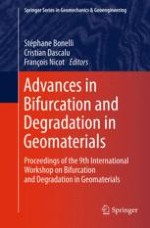This book presents contributions to the 9th International Workshop on Bifurcation and Degradation in Geomaterials held in Porquerolles, France, May 23-26, 2011. This series of conferences, started in the early 1980s, is dedicated to the research on degradation and instability phenomena in geomaterials.
The volume gathers a series of manuscripts by brilliant international scholars reflecting recent trends in theoretical and experimental research in geomechanics. It incorporates contributions on topics like instability analysis, localized and diffuse failure description, multi-scale modeling and applications to geo-environmental issues.
This book will be valuable for anyone interested in the research on degradation and instabilities in geomechanics and geotechnical engineering, appealing to graduate students, researchers and engineers alike.
